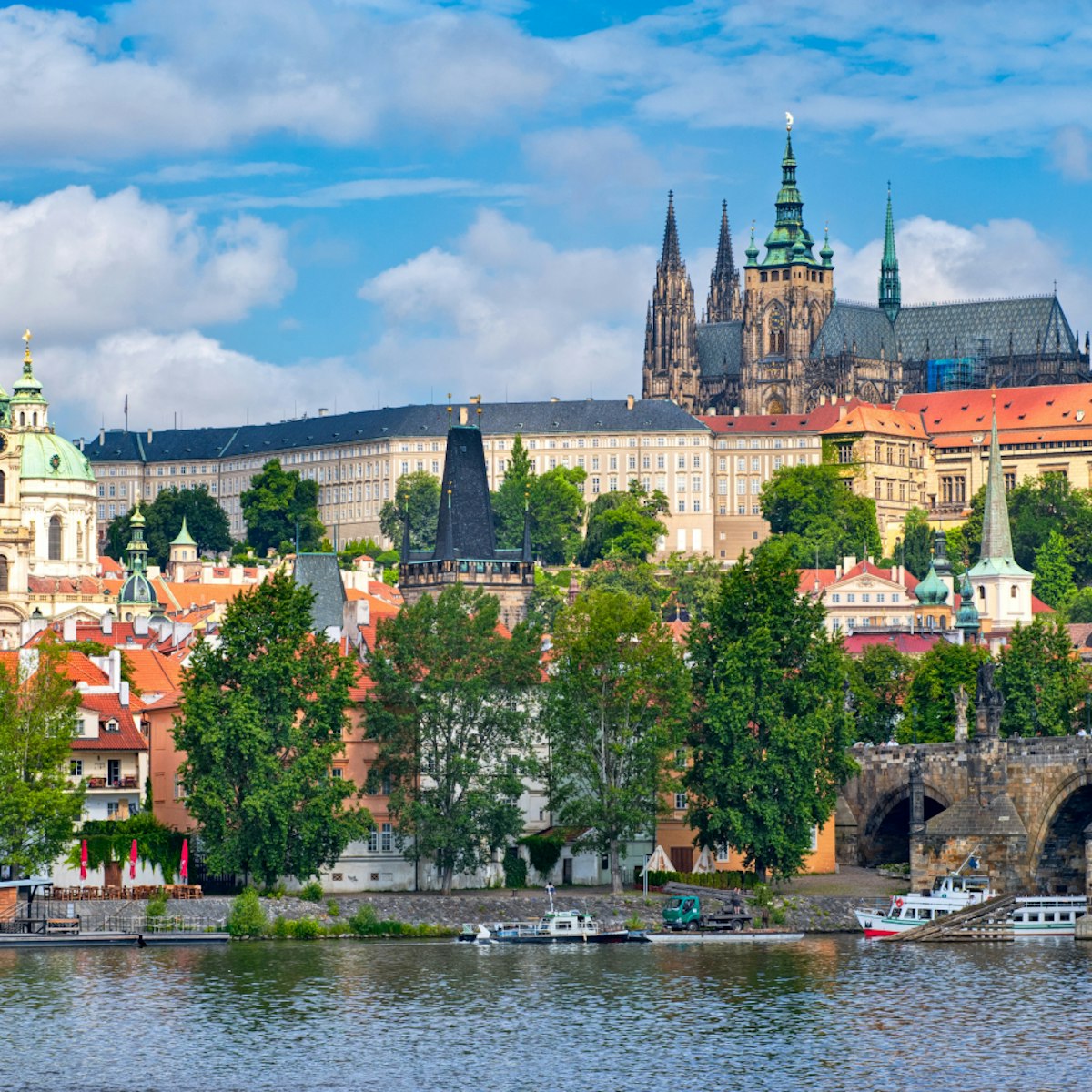Prague’s Old Town Hall, founded in 1338, is a hotchpotch of medieval buildings acquired piecemeal over the centuries, presided over by a tall Gothic tower with a splendid Astronomical Clock. As well as housing the Old Town’s main tourist information office, the town hall has several historic attractions and hosts art exhibitions on the ground floor and the 2nd floor.
The main entrance is to the left of the clock; beyond that is the House at the Minute (dům U minuty), an arcaded building covered with Renaissance sgraffito – Franz Kafka lived here (1889–96) as a child just before the building was bought by the town council.
Visitors take a guided tour that proceeds through the council chamber and assembly room, with beautiful mosaics dating from the 1930s, before visiting the Gothic chapel and taking a look at the inner workings of the 12 apostles who parade above the Astronomical Clock every hour. The tour includes the tower and is rounded off with a trip through the Romanesque and Gothic cellars beneath the building.
The area outside the town hall is one of the most crowded corners of the Old Town Square, especially during the hourly show put on by the Astronomical Clock. Around the corner to the right, a plaque on the building’s eastern face lists the 27 Protestant nobles who were beheaded here in 1621 after the Battle of Bílá Hora; white crosses on the ground mark where the deed was done. Another plaque commemorates a critical WWII victory by Red Army and Czechoslovak units at Dukla Pass in Slovakia, and yet another, the Czech partisans who died during the Prague Rising on 8 May 1945. If you look at the neo-Gothic eastern gable, you can see that its right-hand edge is ragged – the wing that once extended north from here was blown up by the Nazis the day before the Soviet army marched into the city in 1945.







